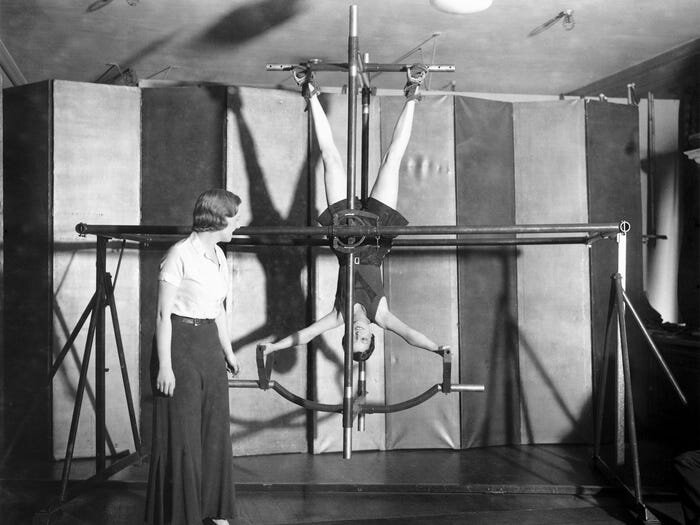by Bette Chamberlin (originally published here)
Maybe we've seen the devices designed to assist in elongating the spine - Posture Pump, Chirp Wheel, Spinal Decompression reliever, various Inversion benches and more. They are designed to help a healthy, well functioning spinal structure and their corresponding muscles to stretch out and assist in creating more space between the joints in the vertebrae.
What happens if these devices are used on already too tight muscles and compressed joints? There may be discomfort and if pushed too far beyond the capabilities of the body, injury can occur.
When the muscles around the spine are tight, tension and protection, and then pain and subluxations (misalignment of the vertebrae) can happen. Often, our faulty habits win, but we don't know it.
Where to start?
It's NOT about engaging your muscles MORE, it is about engaging some of them LESS.
For example, try this:
Sit in a chair or stand with your arms at your side. Bring your right hand towards your face and look at it.
1) Now focus on your fingers and let them be limp and curled in towards your palm. There is no tone (a degree of tension) in your fingers.
2) Now stiffen the fingers by over-straightening them. Now there is an excess of tone in your fingers and wrist.
3) Now think about lengthening your fingers away from your wrist as if 5 beads of light were shining out. This is using your brain to send a signal to your fingers that says I'm lengthening (with either too little or too much tone). What is your experience of this; is it freer, more easeful yet actively engaged?
If you have a sneaking suspicion that you work too hard at mastering any skill, I can help you figure it out. You are probably also moving through your daily life with excess tension as well, which is why we start with some basic everyday movements like walking, sitting,standing, brushing your teeth, or picking up your child.
Learning about our habits in this context paves the way for a more heightened awareness of our chosen activities like singing, dancing, rowing, playing the violin, or lifting weights .
Bette Chamberlin (ACAT ‘03) comes from a professional ballet background dancing with American Ballet Theater, and later teaching at NYC studios and universities (NYU and Montclair State University). While suffering many years, after retirement, from poor muscular habits related to her dancing, she found the Alexander Technique which completely changed her life. It was a revelation that through gentle hands and constructive thinking in activity her pain could be greatly reduced. She has been teaching for 15 years and has helped musicians, vocalists and dancers to improve their skill set while learning to do less. www.bettechamberlin.com


